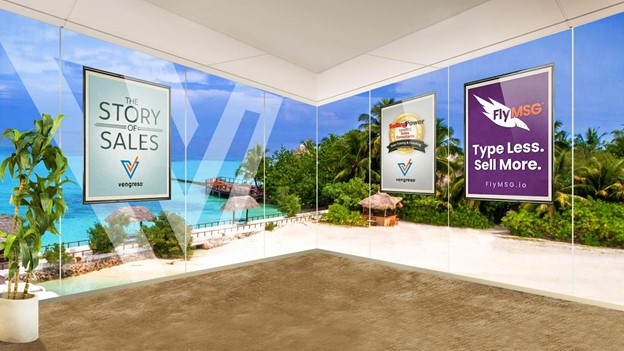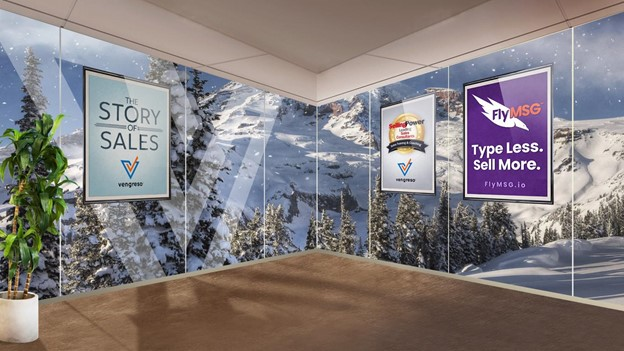ATD Blog
3 Modern Skills Needed to Excel at Virtual Selling
Tue Feb 09 2021

With the COVID-19 pandemic putting a stranglehold on face-to-face selling, the growth of virtual selling has been astonishing. Organizations that refused to adopt remote work have been forced to adapt to what last year had in store for everyone.
But what is it about virtual selling that has baffled so many organizations? A good sales professional can just easily use their people skills and on the field prospecting abilities to sell to the modern digital buyer, right? Not exactly.
The modern buyer quickly became better and faster at buying than sellers were at virtual selling. We want to increase those skills and give your remote sales team the right tools to compete in today’s virtual selling environment.
Here are three modern skills needed to excel at virtual selling in 2021 and beyond.
1. Social Selling Skills as Part of an Omnichannel Approach
Organizations that use cold calls and cold email outreach to attract their prospects are only reaching 10 percent of their prospective buyers. But where are the other 90 percent? On social media channels.
The goal of social selling is to build relationships with prospects through authentic human-to-human conversations formed through digital platforms. Once you have established a relationship with a warm prospect grounded in trust, you earn the right to ask for a meeting or a phone call to start a sales conversation. Skills include not just being present on their buyers' favorite platforms but posting shareable content, engaging with likes and comments, and even doing a little virtual spying on the competition.
When it comes to B2B sales, the world’s most popular social platform is LinkedIn, which has more than 700 million users. Acquired by Microsoft in 2016, this platform that once was used as an online resume has morphed into the epitome of modern-day sales prospecting.
Organizations leave their digital footprints on LinkedIn, and those who have trained their sellers on social media selling know exactly what to look for. From trigger events to company size and challenges, LinkedIn can be the social face of your brand and the hunting ground for your next virtual sale.
2. Video for Sales Skills
The second arrow every sales leader needs to have in their quiver is the ability to prospect and sell using videos.
Incorporating video into your sales strategies allows you to build a high level of trust and authenticity with your audience. Second only to a face-to-face meeting, video is the best way to engage with prospects (either synchronous or asynchronous), if done correctly. When you create an authentic video message and your customers can see your facial expressions and hear you speaking to them, a human connection forms without you being there in person.
Using personalized video messages helps you stand out from the competition, giving customers an inside look at you as a person and the remote connection point needed to start the trust-building process.
This is still an area that has significant upside because many sellers are not yet using this channel. With that in mind, a personalized video message will help you stand out from the crowd inside of a crowded buyer’s email box.
3. Skills to Create Engaging Virtual Meetings
One of the many discoveries found in virtual selling is that it is hard to keep customers engaged during long sales meetings.
Before the pandemic, a group of buyers and sellers could network and build relationships in your conference room prior to the meeting.
The meeting would begin, and you would share slides and resources that everyone could engage with in person. Today’s modern seller doesn’t have the luxury of such meetings and must make their virtual ones more interactive.
Studies find that the maximum attention span on one particular topic for virtual selling is 20 minutes. The adult concentration span today is about 20 minutes. If your meetings last an hour, find a way to reduce the meeting time. If you do host an hourlong meeting, then ensure you have a highly engaging discussion with your prospective buyer. You’ll want to use tools like Gong.io to listen to your sales reps’ calls and ensure they are doing less talking and more listening. Then coach them on behaviors that will shorten their commentary.
Also teach sellers unique ice breakers for starting a 60-minute meeting. These icebreakers start with a proper virtual background. For example, here are a couple of custom designed virtual backgrounds Vengreso sellers use. Notice one is a water scene and one features snow. We created different backgrounds based on where sellers may live.
Platforms like Zoom.us also have great virtual backgrounds.


Winning in a Virtual Sales Environment
The current virtual environment has made tech-savvy sellers of us all, and it will only grow from here. Organizations are investing a lot more in social selling skills, video sales prospecting, and various virtual selling tools. So, what’s next for the world of virtual selling?
We expect virtual selling to be the new normal. In fact, we predicted this nearly four years ago that it would happen within five years. Virtual selling is here to stay, and it won’t go back to normal. Companies have realized and seen the immense benefits of lowering the cost of the sale and customer acquisition. In-person events and travel will resume at some point, but they won’t go back to where they were prior to March 2020.
Virtual selling will continue to force organizations to pivot and rethink their strategies to stay relevant in marketing and in sales engagement. It will require sales leaders to adopt deeper strategies around omnichannel engagement, and it is our prediction that those leaders who do not adapt, change, and adopt will be obsolete within six months.
We hope to see travel resume and be able to attend events like we once did. However, once we spend a few months back in traffic and remember what jet-lag feels like, surely we’ll happily alternate between the two.
You've Reached ATD Member-only Content
Become an ATD member to continue
Already a member?Sign In
